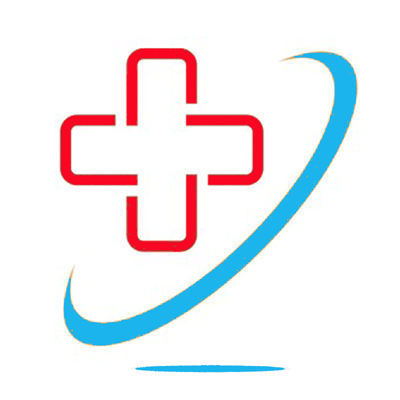More Pieces of the Triage Puzzle – July 25
 Our latest paper investigates factors which influence failure of triage to identify critically ill patients who need an acuity set to priority 1 (Red) or 2 (Orange).
Our latest paper investigates factors which influence failure of triage to identify critically ill patients who need an acuity set to priority 1 (Red) or 2 (Orange).
World-wide the main triage systems give worrying 1 & 2 false-negative rates. We show that for most patient arrival rates acuities 1 & 2 are sub-maximal.
Triage is failing patients, ED staff and hospitals in complex ways and needs improvement. Advancement in the understanding and analysis of triage systems is urgently needed. Since analytical methods for complex systems frequently draw the wrong conclusions, methods used in causal reasoning and evaluation of causal relationships were applied. This is dry stuff!
You might be relieved to find that we’ve accompanied the causal pathway diagrams with cartoon-like depictions of conceptual modelling. Two models are shown: Part 1 the events prior to triage and up to the point where acuity is chosen and Part 2 the whole department model including all patient outcomes. Triage can only be improved with a combined effort of a multidisciplinary task force. Overcoming communication barriers is essential (and hopefully achieved in our paper).
What are we reporting? The key revelation is that identification of critically ill patients seems influenced by the triage nurse’s decision of how many vital signs to record at triage. Two prior events influence their decision:-
1) The interval between the current patient and the previous patient
2) The mode of arrival
This sets up an influence on the subsequent initial patient assessment by doctors, then on the decision whether or not to discharge or admit the patient. It also influences patients deciding to leave the ED.
The large data set from Merano Hospital in Italy included 414,841 serial attendees and all key events were time stamped. We used the Triage start time stamps and sorted the whole sample on the size of the start-start interval. Ten categories of patients spanned intervals from < 1 minute to > 20 minutes since the prior patient.
Unsurprisingly, there was a general trend with 6 out of 7 vital signs (VS) showing an increase in the number of VS entered with more widely separated arrivals. The exception was the pain score entry 0-10 which did not show time sensitivity.
What was a great surprise was that the percent of patients assigned Red and Orange was highest only in the top sample where the start-start intervals were > 20 minutes, with median interval 33 minutes. At 4 min and 18 min 54.8% and 90.9% of attendees respectively have sub-maximal acuities 1 & 2.
Not so surprising, was the impact of mode of arrival – MOA. In Italy there are three categories: by ambulance with a doctor in attendance; by ambulance or by other means. The difference in relative proportions of VS recording with the three MOA were easy to understand.
For Acuity 1: Patients arriving by ambulance + medic were less likely to have VS recorded or entered into the system (30.0% +VS; 52.7% -VS). Whereas patients arriving by their own method were more likely to have VS recorded (36.2% +VS;
16.7% -VS). For Acuity 2: The pattern was similar: Ambulance + medic arrivals were 14.2% +VS and 29.3% -VS. Patients arriving via own method were more likely to have VS (49.4% +VS; 34.5% -VS). Where less information arrived with the patient nurses were encouraged to add VS.
The orange and yellow acuities showed a time sensitive positive correlation to prior patient interval with the +VS datum points showing a higher percent of patients than the equivalent -VS points. The Green and Blue plots simply showed the negative equivalent.
Three pieces of the puzzle needed explanation:
1. Why for Red acuity the +VS points were below the -VS?
2. Why, for Red +VS, there was no significant correlation with prior patient interval?
3. But Red – VS showed a significant positive correlation between percent patients and median interval?
The first point turned out to have a simple explanation, based on the wording of the MTS discriminators. Although yellow and orange discriminator ‘verbal anchors’ have wording where the knowledge of an abnormal vital sign result might prompt selection, the wording of Acuity 1 discriminators made a prompting effect unlikely.
The whole department conceptual model reconciled all the observations into a unifying hypothesis. It also tidied up point 2 above. The Ambulance + medic arrivals are handed over directly and have the accompanying doctor’s account. The prior patient interval is largely irrelevant, hence no correlation with median intervals.
The model cartoon depicts the situation for the other arrivals. There is a pivotal role for the triage nurse and patient arrival rate in the quality of the information the receiving doctor gets prior to their initial assessment. The difference lies between the two extremes: ‘quick look’ triage with minimal triage information and no VS, contrasted with a doctor who receives a full triage with better acuity and more VS. For the former, discharge will be unsafe. For the latter physician, who gets a ‘head start’, discharge will be safer. After a ‘quick look’ there will be a significant delay in reaching a differential diagnosis. Puzzle 3 is probably related to this delay, since where adverse events occurred or condition worsened during a patient’s time in ED the acuity was updated and overwritten.
Sadly what Mark Leaning’s cumulative distribution analysis (Fig.2f) told us was bad news. There were 54.8% of the Merano attendees arriving at such rapid rates that their discharge included many ‘missed’ acuity 1 & 2 patients. This fits with Arian Zaboli’s own peer-reviewed publications from which we calculated worrying false-negative rates. This is another example where scientific terminology (usually the Receiver Operator Curves and ‘sensitivity and specificity’ are reported) prevents the penny dropping!
False-negative rates are alarming: Pulmonary embolism (64.6%), sepsis or septic shock (47.9%) urgent severe neurological events including stroke after non traumatic headache (64.7%) acute cardiovascular events after chest pain (54.3%) severe acute disease after transient loss of consciousness (57.6%) and cardiac syncope (55.2%). These results and others are in the Data Supplement.
Bottom lines:
Legacy triage methods cannot cope with fast arrival rates in ED
Transcription of VS parameters is too slow (and error prone – but that’s a different saga)
Serial processing of patients too often leads to ‘starting again’
The temptation to use ‘quick look’ triage needs to be avoided
Multidisciplinary working needs teams who have different jargon need to find ways to communicate
Gillie Francis – July 25


